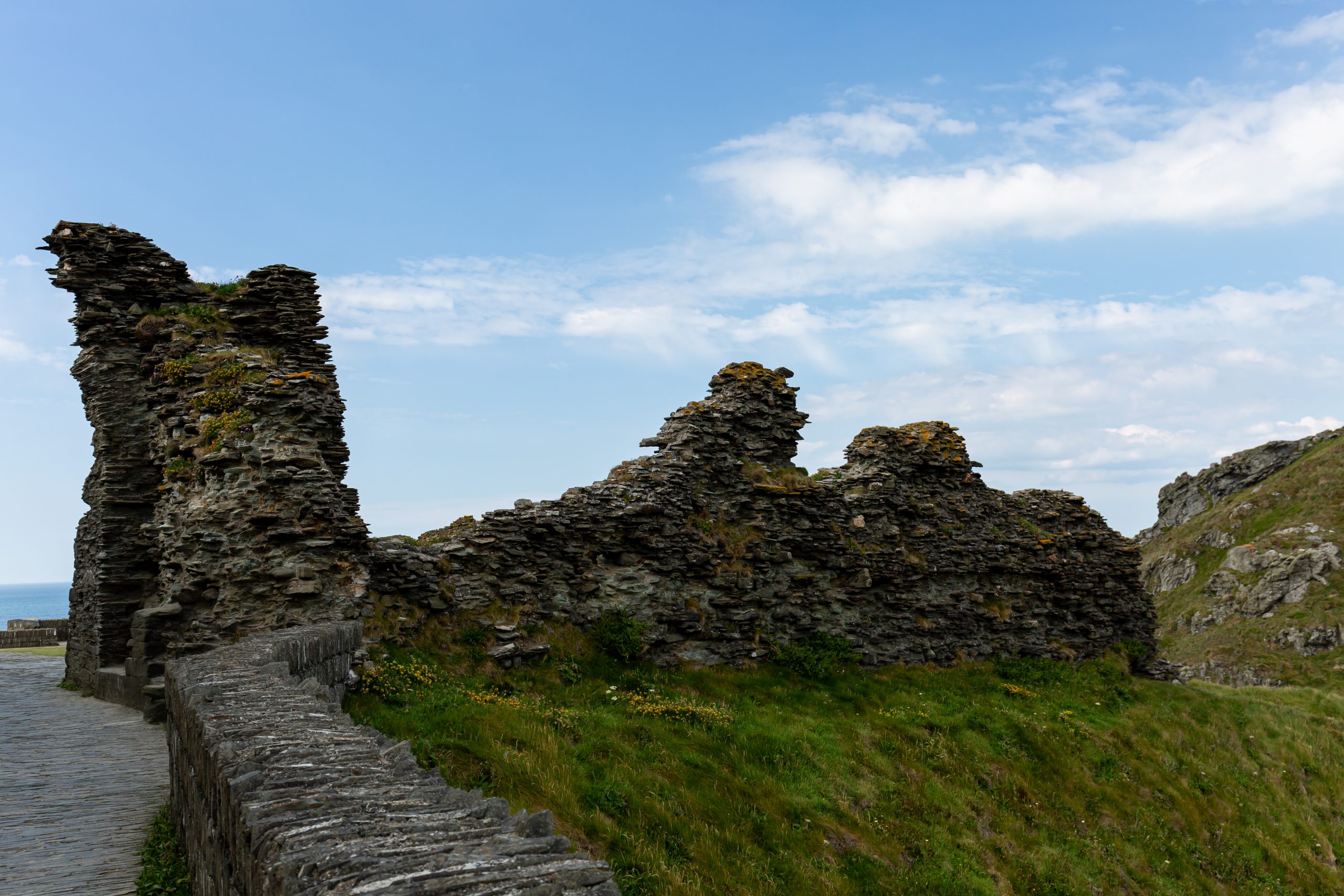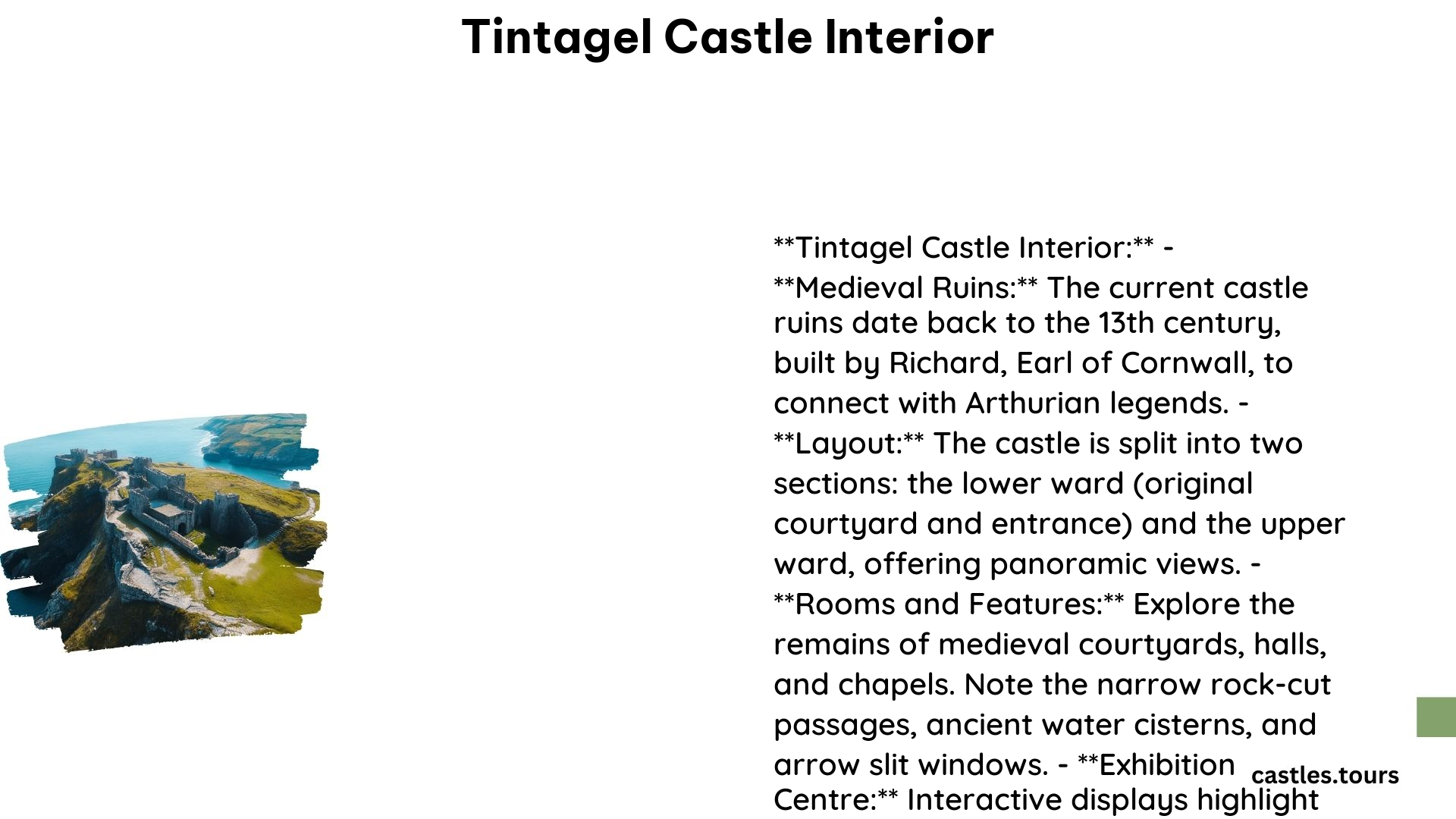Tintagel Castle, located on the rugged Cornish coast, is a captivating historical site that has captured the imagination of visitors for centuries. The castle’s interior and surrounding area offer a glimpse into the rich history and legends associated with this iconic location. From the remains of the 13th-century castle to the intriguing early medieval buildings, Tintagel Castle’s interior is a treasure trove of archaeological wonders.
What Buildings Can Be Found at Tintagel Castle?

Tintagel Castle’s interior is home to a variety of structures, each with its own unique history and significance. The site features the remains of the 13th-century castle, as well as earlier buildings dating back to the late Roman period and the early medieval era.
What are the Headland Buildings?
The headland of Tintagel Castle is dotted with the ruins of buildings that date back to the 5th century. These structures are believed to have been part of a thriving community that was a vital economic center of Britain, known for its tin mining and trade with the Mediterranean.
What is the 13th-Century Castle?
The castle ruins visible today are primarily from the 13th century, built by Richard, Earl of Cornwall, brother of Henry III. This castle was likely constructed more as a statement of power and connection to the Arthurian legends rather than as a defensive structure.
What Types of Buildings Can Be Found at Tintagel Castle?

The ruins at Tintagel Castle include a variety of structures, each with its own unique purpose and significance.
What are the Castle Walls and Terraces?
The ruins include the remains of castle walls, terraces, a grand hall, and various other structures such as storage areas and a graveyard. These structures provide insight into the layout and function of the 13th-century castle.
What are the Small Rectangular Buildings?
The headland is also covered with many small rectangular buildings, which are believed to be part of the early medieval settlement. These buildings are significant as they indicate the presence of an elite community that lived on the headland.
What Artifacts Have Been Discovered at Tintagel Castle?
Excavations at Tintagel Castle have uncovered a wealth of artifacts that provide insight into the site’s history and importance.
What Pottery and Coins Have Been Found?
Archaeologists have discovered shards of imported pottery and early coins, as well as two Roman inscribed pillars, indicating the site’s importance as a trading port.
What Other Finds Have Been Uncovered?
In addition to pottery and coins, archaeological finds at Tintagel Castle include evidence of tin mining and other economic activities that contributed to the wealth of the area.
Why are the Small Rectangular Buildings Significant?
The small rectangular buildings found on the headland of Tintagel Castle are particularly significant for several reasons.
What Does the Presence of an Elite Community Suggest?
The existence of these buildings suggests the presence of an elite community that lived on the headland, indicating a level of prosperity and importance in the region.
How Do These Buildings Contribute to the Site’s Historical Importance?
These buildings are part of the early medieval settlement, which predates the 13th-century castle and is associated with the Arthurian legends. This makes them an important part of the site’s rich history.
Practical Information for Visiting Tintagel Castle
If you’re planning a visit to Tintagel Castle, there are a few practical details to keep in mind.
What are the Opening Hours?
Tintagel Castle is open daily from 10am to 6pm, with the last entry one hour before closing.
How Can I Access the Castle?
The castle can be accessed on foot via a long path from the village, and a modern suspension bridge connects the mainland to the island, facilitating easier access.
What is the Cost of Admission?
The entrance fee varies depending on the date, so it is advisable to check the English Heritage website before visiting.
Conclusion
Tintagel Castle’s interior and surrounding area offer a fascinating glimpse into the site’s rich history and the legends that have captivated visitors for centuries. From the remains of the 13th-century castle to the intriguing early medieval buildings, there is much to explore and discover at this iconic Cornish landmark.
References
- English Heritage – Tintagel Castle: Visit Tintagel Castle – English Heritage
- Adventures of a Carry On – Tips for Visiting Tintagel Castle: How To Make The Most of a Visit To Tintagel Castle, Cornwall
- English Heritage – Spotlight on Tintagel: Tintagel Castle – English Heritage
